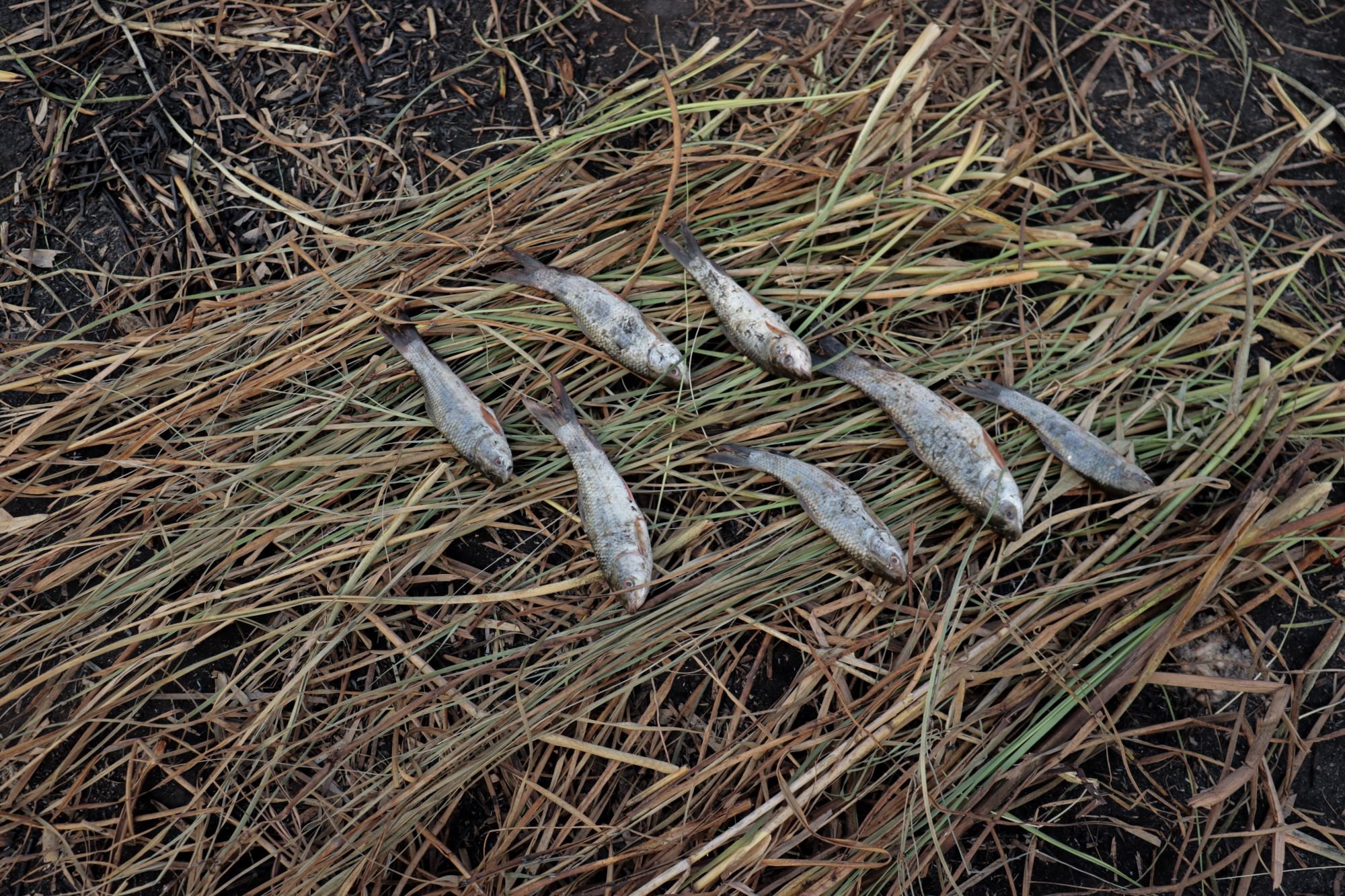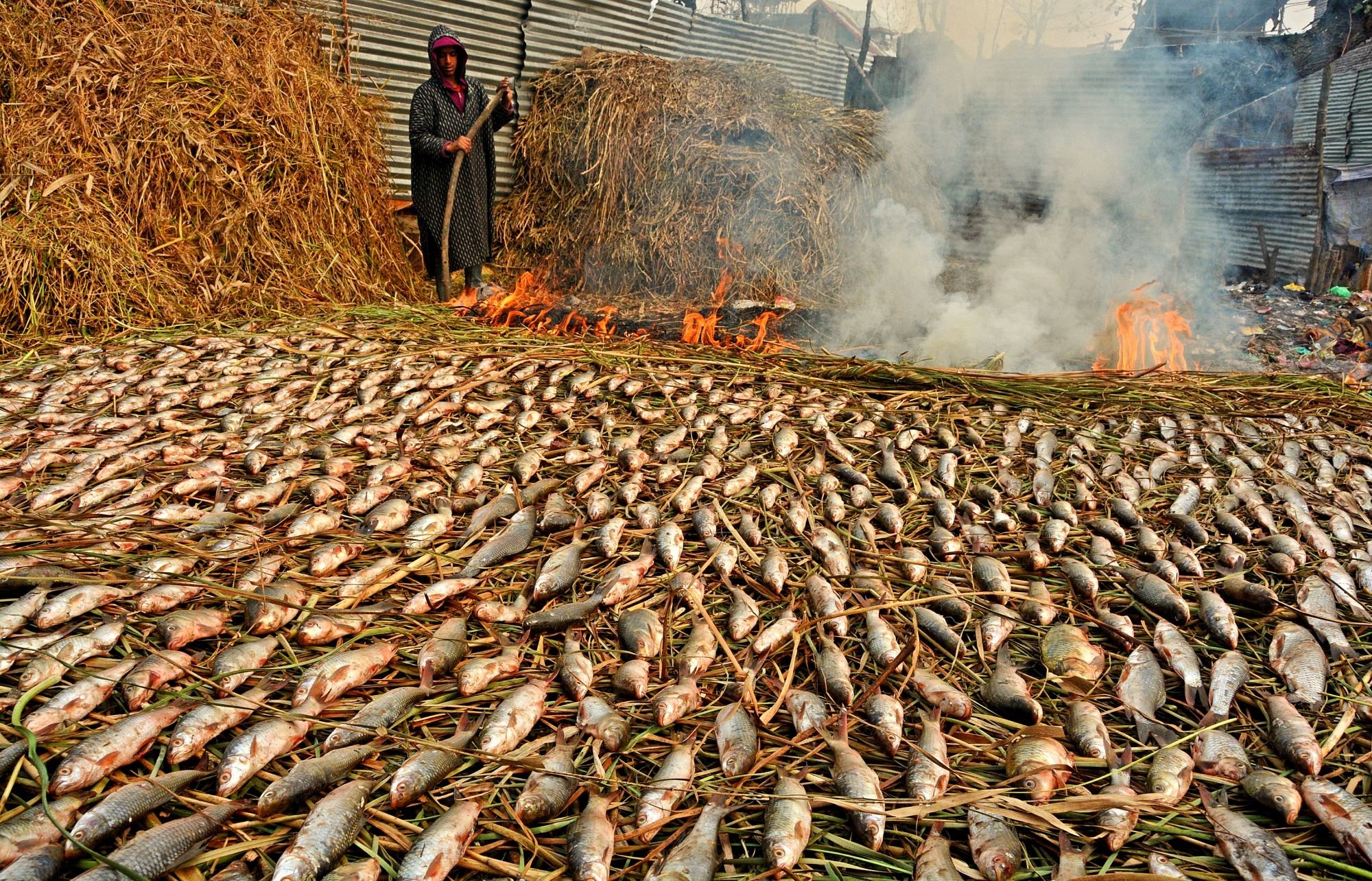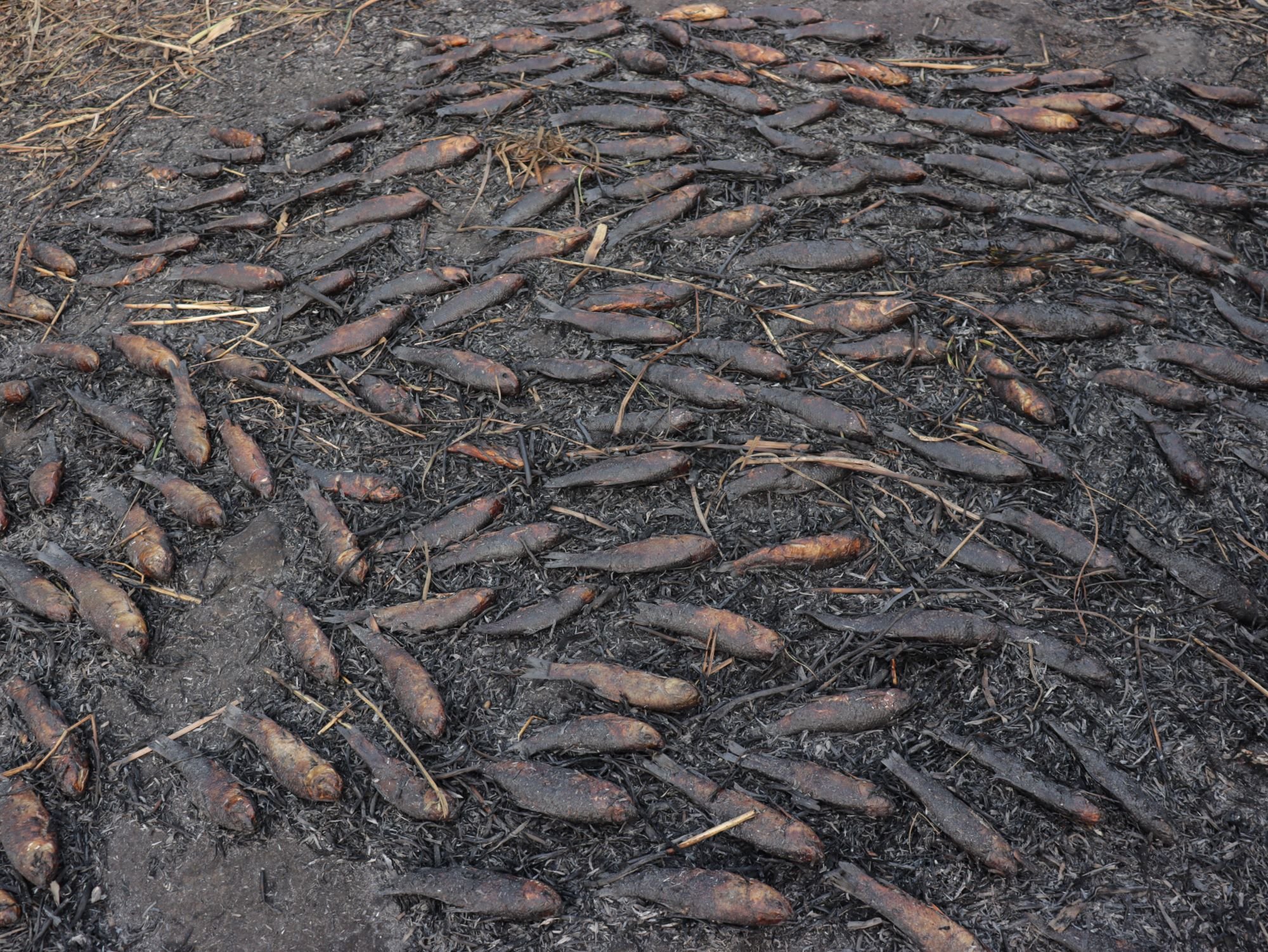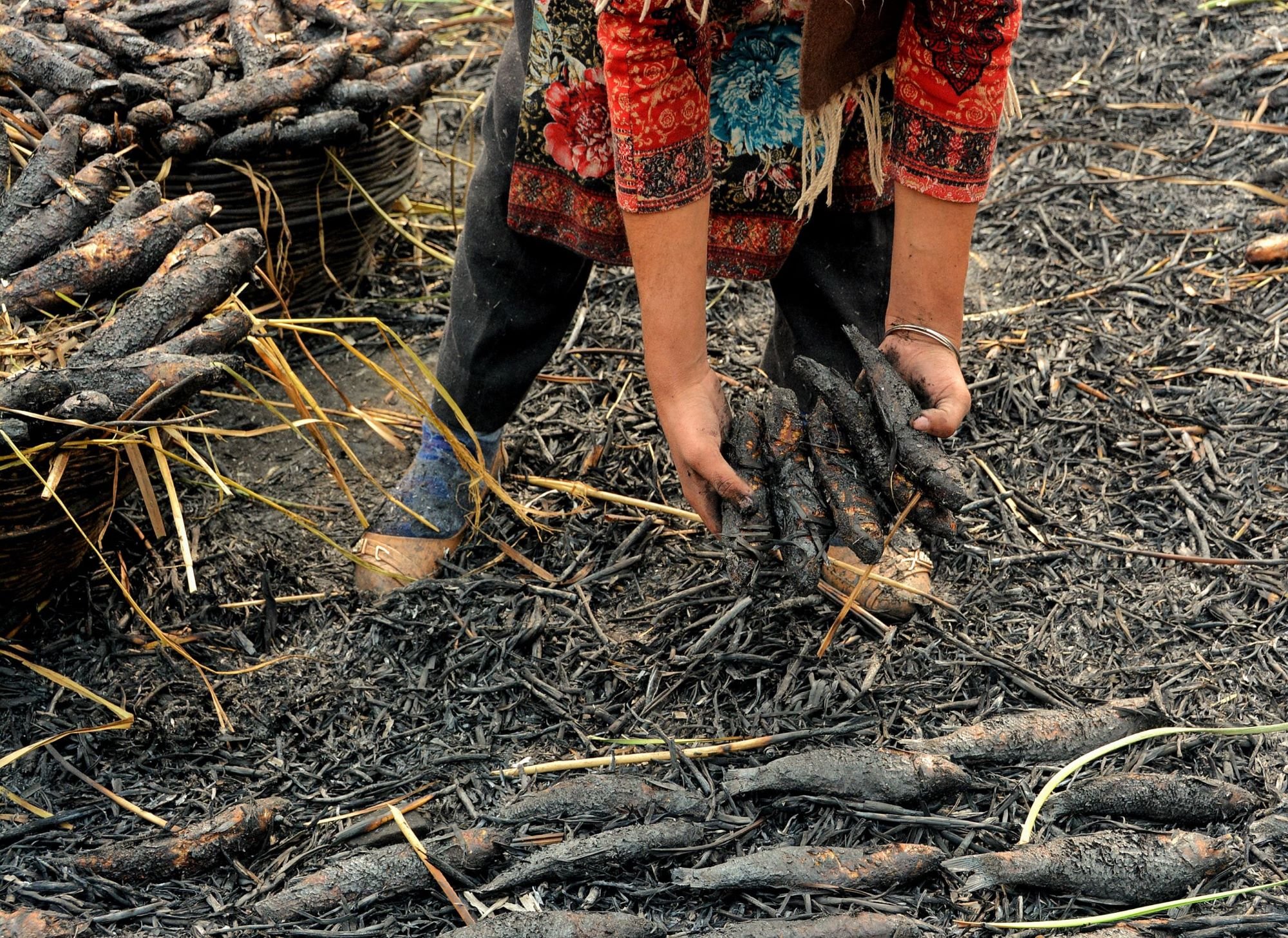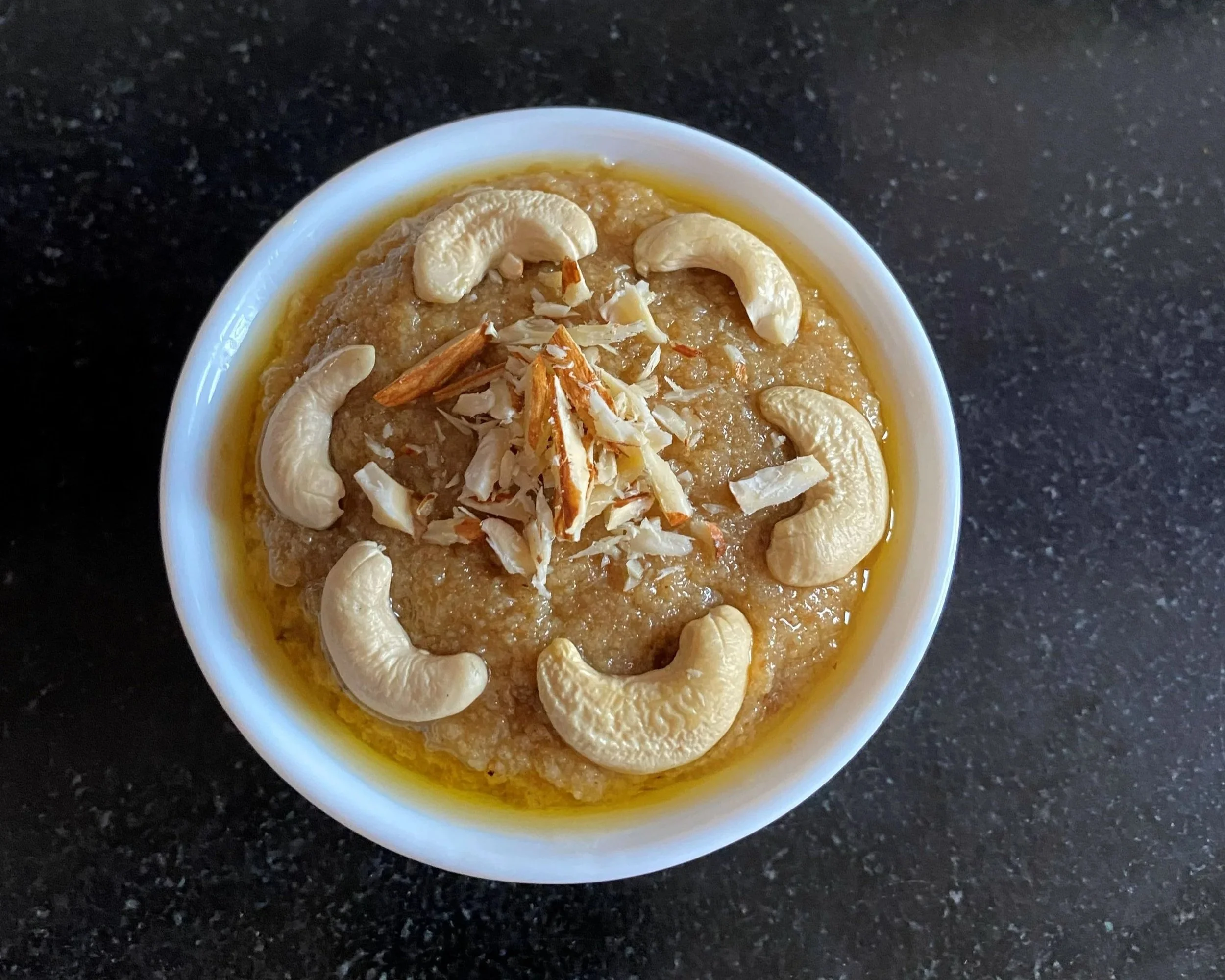Phari is a Centuries-Old Winter Tradition in the Kashmir Valley

Tauseef Ahmad goes behind the scenes of the making of the delicious and nutritious phari, grass-smoked fish from the valley that a winter favourite, believed to provide respite from the harsh cold.
As winter grips the picturesque landscapes of Kashmir, a culinary tradition, deeply rooted in history, comes alive in the Valley. The aromatic fragrance of phari (smoked fish) permeates homes, providing comforting respite from the unforgiving cold. Beyond the homes, this dish can be found in the winter markets of the region.
Cooking phari is a tradition that goes back centuries. “The demand increases in the winter months as it has been used to battle the cold, and treat common winter ailments," says Mohammad Akbar, 56, a seller from the Soura area of Srinagar. Soura is well known for its phari, with recipes that have been passed down generations.
Come winter, and markets in Kashmir are stacked with smoked fish. Photos credit: Mohsin Mushtaq.
Making phari is a long, laborious process. Work begins in autumn, when locals harvest naar gaase (grass) from the wetlands, bundling and drying them, to be stacked in layers. Snow trout or kasher gaa’d, fished from nearby streams, is a preferred fish. The trout is meticulously cleaned and then smoked — the fish is placed in the grass, which is then ignited. Flames transform the fish’s silvery skin to black, infusing the meat with a unique, smoky flavour. “After hours, the outer layer of the fish becomes tender and can be scraped away. Then, after two days, when the fish is cool, we take it to markets to sell,” says Mohammad, whose family has been selling phari for over two decades.
Phari is typically cooked with Kashmiri haakh (collard leaves), transforming the dish into the famed phari hakh, eaten with hot steamed rice. It can also be paired with lotus stem, radish, dried brinjal, radish, or tomatoes.
Another local resident Abdul Samad, 53, has been in the smoked fish business for years. “We sell it in local markets for 300 rupees per kilo,” he says. Despite its historical significance, the demand for smoked fish has dwindled over time. Changing tastes among the younger generation and the availability of fresh produce throughout the year are contributing factors to its decline. Bashir Ahmad, a seller in Soura, reflects on these challenges. “Most of the younger generation are reluctant to do this business as they feel that they will be looked down upon. And, there is less demand,” he acknowledges. “We will continue to make it as long as the demand remains.”
This traditional dish is losing its fame in the Valley, and the number of families making it are dwindling too.
This fading tradition of smoked fish is as a poignant reminder of the delicate balance between preserving cultural heritage and adapting to evolving times.
Tauseef Ahmad is a freelance journalist based in Kashmir. He covers food, climate, environment, education and conflict.
ALSO ON GOYA

